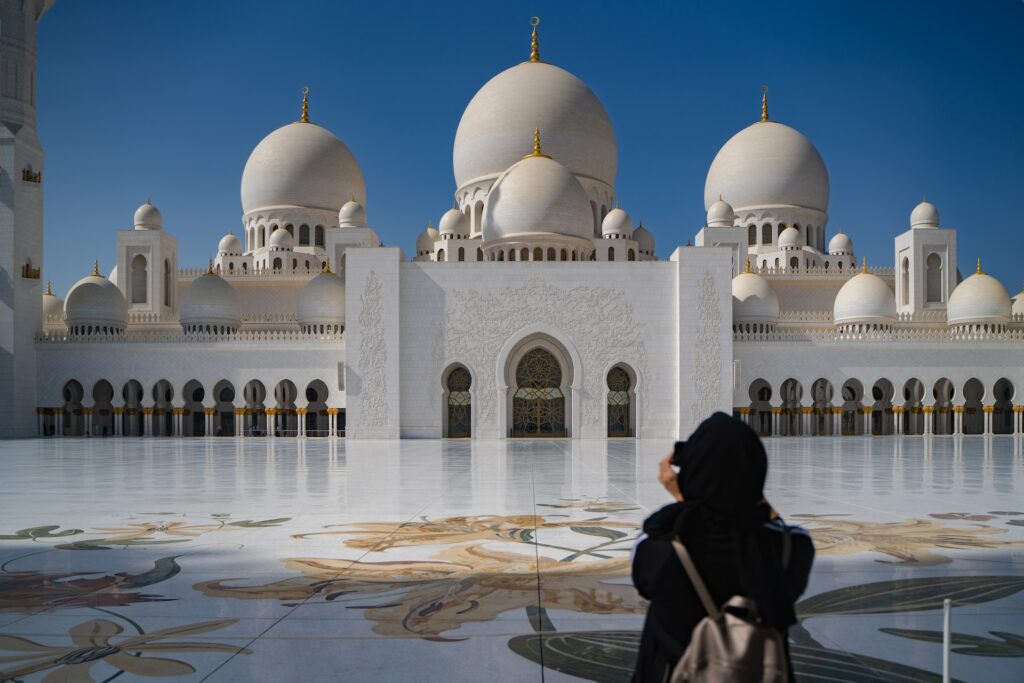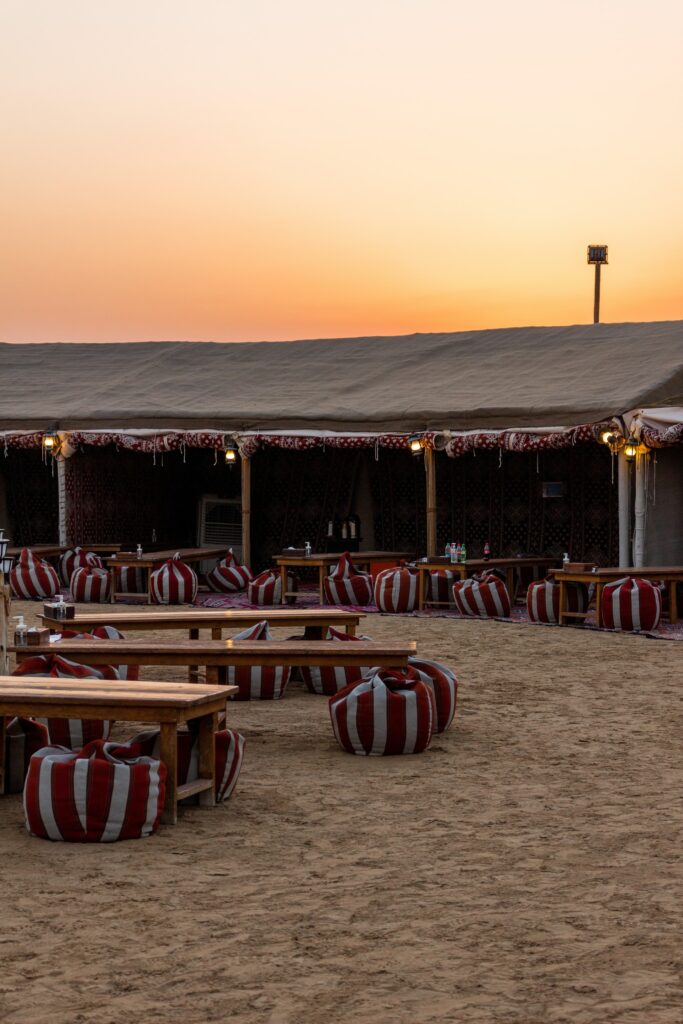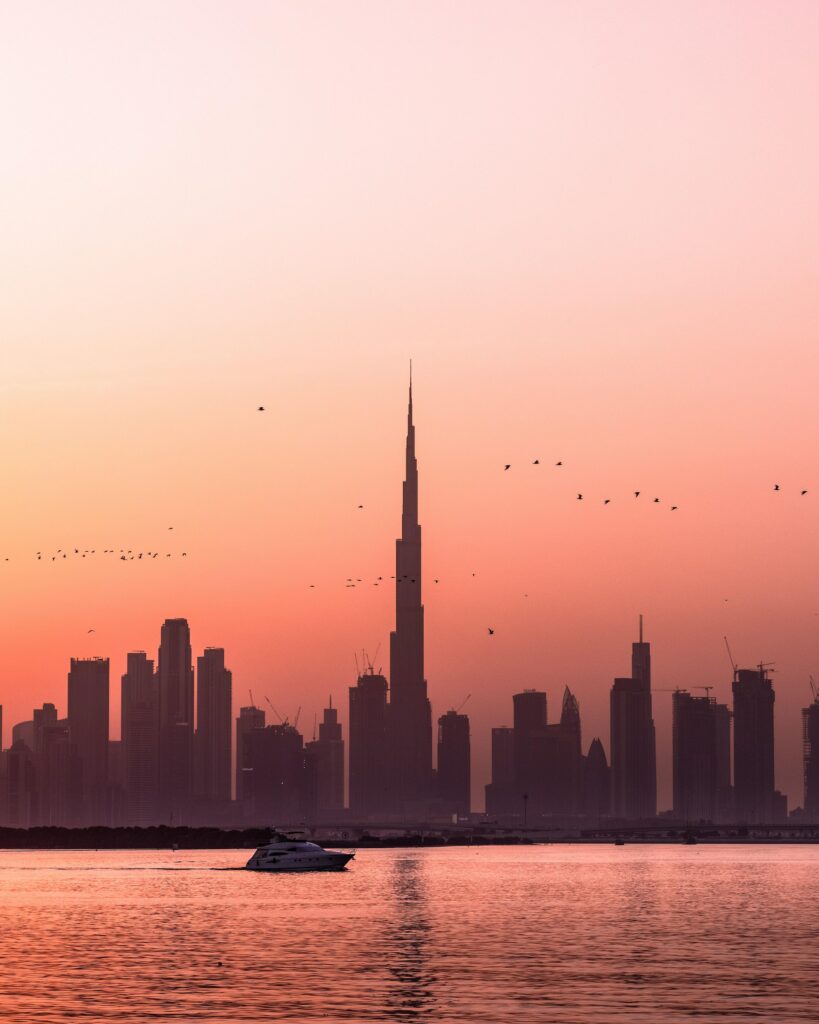Dubai, the glittering jewel in the United Arab Emirates’ crown, is a city of the most stunning superlatives. Home to the tallest building, the largest shopping mall, the most expensive penthouse, and the only seven-star hotel in the world, it’s a place where dreams (if they involve lots of bling, of course) transcend reality – for a price.
The Ideal Time To Experience Dubai
But when is the ideal time to experience this oasis of opulence? Here’s when might be the best time of year to visit Dubai.
Escaping To Winter Sun: November To March
The winter months, from November to March, are widely regarded as the prime time to visit Dubai. The weather is pleasantly warm rather than oppressively hot, with average temperatures ranging from 17°C to 30°C. This is the perfect climate for sun-seekers escaping the chill of the British winter.
Festivities & Fun
Winter in Dubai is a time of great celebration. The city comes alive with events like the Dubai Shopping Festival in December and January, where shopping and entertainment reach new heights.
Imagine live concerts, fashion shows, and fireworks, all accompanied by unbeatable retail deals, and you’re imaging Dubai during winter.
Outdoor Adventures
With the cooler weather, it’s the opportune time to explore the great outdoors. Whether it’s a desert safari, a stroll around the Dubai Miracle Garden, or a day spent on the sun-kissed beaches, the winter months offer comfort and accessibility to Dubai’s plethora of outdoor attractions.

Anticipating A Scorcher: April To October
The period from April to October is when the city simmers under the desert sun, with temperatures often soaring above 40°C. While this might seem daunting, it’s not without its advantages.
Quieter Sightseeing
If you can handle the heat, you’ll benefit from fewer crowds at popular tourist spots. Imagine having more space to yourself at the Burj Khalifa’s observation deck or a quieter experience in the historic Al Fahidi neighbourhood.

Cultural Connections: Ramadan
If you’re interested in cultural experiences, visiting during Ramadan, the Islamic holy month of fasting, can be particularly enlightening. While daytime dining options may be limited, the evening Iftar (breaking of the fast) provides a unique opportunity to connect with local traditions and cuisine.
Luxurious Leisure
Dubai’s world-class infrastructure means you can indulge in luxury, even in the peak of summer. From air-conditioned shopping malls and bright and breezy top-tier restaurants, all the way to chilled indoor ski slopes, the city is designed to beat the heat. And let’s not forget the enticing summer rates at some of the most opulent hotels in the world.

Making The Most Of Shoulder Seasons
The transitional months of April and October, known as the shoulder seasons, offer a balance between the cooler and hotter parts of the year. The temperatures are on the rise in April and cooling down in October, making these months a sweet spot for those looking for moderate weather without the winter crowds.
Getting There From The UK
Embarking on a journey to Dubai from the United Kingdom is a venture into a world of contrast and splendour. The connectivity between the UK and Dubai is exceptional, with multiple airlines offering direct flights from various cities across the UK.
Flight Options
Major airports like London Heathrow, Manchester, Birmingham, and Glasgow offer direct flights to Dubai, primarily operated by Emirates and Etihad Airways, the UAE’s two flagship carriers, and British Airways. The average non-stop flight duration from London to Dubai is approximately 7 hours, making it a relatively easy long-haul trip.
Best Time To Book
When it comes to booking your flight, timing is everything. For the best deals, consider booking your flight at least three months in advance. Keep an eye out for sales, often available in the quieter summer months or during significant booking periods like Black Friday or the post-Christmas period.
Read: Debunking myths and sharing secrets for nabbing cheap flights in 2023

Airport Transfers
Upon arrival at Dubai International Airport (DXB), you’ll find a well-organised system for getting to your accommodation. Options include metered taxis, which are plentiful and reasonably priced, the Dubai Metro, and car hire services for those who prefer to navigate the city at their own pace.
The distance between Dubai Airport and Downtown Dubai is 10 km, and should take less than 30 minutes.
Visa Requirements
For British passport holders, tourism travel to Dubai is straightforward, with a visa-on-arrival system that allows you to stay for up to 30 days. This visa can also be extended for a further 30 days without having to leave the country, giving you plenty of time to explore all that Dubai has to offer.
Cultural Considerations
Lastly, while Dubai is a modern and cosmopolitan city, it’s important to respect local customs and laws. Dressing modestly and being aware of cultural sensitivities, especially during Ramadan, will ensure a smooth and enjoyable visit.

Getting Around While In Dubai
Once you’ve landed in the city of superlatives, navigating Dubai’s sprawling metropolis is a crucial part of your travel experience. The city is designed for efficiency and comfort, with a range of transport options to suit every preference and budget.
Public Transport: The Metro, Buses & Water Taxis
Dubai’s public transport system is a hallmark of its modern infrastructure. The Dubai Metro is a popular choice for tourists, with its two main lines (Red and Green) connecting major attractions and shopping malls. It’s clean, air-conditioned, and runs frequently, making it a convenient and affordable way to get around.
Buses in Dubai are another economical option, with extensive routes covering most areas of the city. For a scenic route, try the water taxis, known as Abras, which offer a traditional and picturesque way to cross Dubai Creek.
Taxis & Ride-Sharing
Taxis are readily available and can be hailed on the street or booked via phone or app. They’re metered, offering fair and regulated fares. Ride-sharing services like Uber and the so-called ‘Everything App’ Careem are also operational in Dubai, providing an alternative for those who prefer booking rides through their smartphones.
Renting A Car
For those who value independence and flexibility, renting a car might be the preferred choice. Dubai’s roads are well-maintained and signposted in both Arabic and English, making it relatively straightforward to navigate. Keep in mind that traffic can be heavy during peak hours, and parking can be a challenge in the busier parts of the city.
Bicycles & E-Scooters
Dubai has been investing in cycling infrastructure, with dedicated paths in areas like Jumeirah and Al Qudra. Renting a bicycle or an e-scooter can be a fun way to explore specific neighbourhoods, especially during the cooler months.
Traditional ‘Dhow’ Boats
For a touch of tradition, consider a trip on a Dhow, a classic wooden boat, for a dinner cruise along Dubai Marina or Dubai Creek. It’s a unique way to see the city from a different perspective while enjoying a meal.
Accessibility
Dubai is also known for its commitment to accessibility. Most public transport, tourist attractions, and pavements are equipped to accommodate those with mobility issues, ensuring everyone can enjoy what the city has to offer.
Travel Cards
To streamline your use of public transport, pick up a Nol card, a rechargeable travel card that can be used on the metro, buses, trams, and water buses. It’s a convenient way to manage your travel expenses and avoid the need for cash each time you ride.
The Bottom Line
Ultimately, the best time to visit Dubai hinges on what you’re looking for. For pleasant weather, more outdoor-focused fun, and a vibrant atmosphere, winter is unbeatable. For budget-friendly travel and fewer tourists, consider braving the summer heat. And for a cultural deep dive, align your visit with Ramadan.
Whenever you choose to visit, Dubai promises an unforgettable experience, a blend of tradition and futuristic vision, all wrapped in a gold-leafed veneer of luxury.





